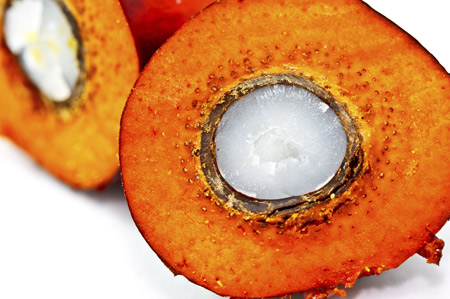Palm-Oil Output in Malaysia Probably Rose Most in Six Months
Category: Oilseeds
 (BusinessWeek) – Palm-oil production in Malaysia, the second-biggest supplier after Indonesia, probably gained the most in seven months in April, after recovering from seasonally low-output months, according to a Bloomberg survey.
(BusinessWeek) – Palm-oil production in Malaysia, the second-biggest supplier after Indonesia, probably gained the most in seven months in April, after recovering from seasonally low-output months, according to a Bloomberg survey.
Output advanced 6.6 percent to 1.29 million metric tons, the biggest gain since September, from 1.21 million tons in March, according to the median estimate in the survey of three plantation companies and two analysts. That’s still 16 percent lower than the 1.53 million tons a year earlier. The Palm Oil Board is scheduled to release the official data on May 10.
Prices gained about 4.5 percent this year after soybean harvests in South America declined as drought wilted crops, draining cooking-oil supplies. Lower production on a year-on-year basis and smaller stockpiles may help palm-oil prices rally even higher, potentially raising profits for Malaysian companies including Sime Darby Bhd. (SIME) and IOI Corp.
“We’re probably going to see more subdued numbers coming out of Malaysia in terms of production,” compared with a year ago, Ben Santoso, an analyst with DBS Vickers Securities (Singapore) Pte., said by phone. Monthly output growth may be higher from May onwards as yields recover after the lagged effects of the 2010 El Nino weather pattern, he said.
Output in Malaysia will drop in the first half from a year earlier, Dorab Mistry, a director at Godrej International Ltd., said March 27. From March, production each month will be less on a year-on-year comparison, and the low cycle may end in November, he said March 7. Production for the first four months of the year will be 2.4 percent lower than the same period in 2011, according to the survey.
Low Cycle
The low cycle may last even longer than estimated due to the “decoupling between weather events and crude palm oil output, a phenomenon that has been exacerbated by the sub-optimal profile of some plantations in Southeast Asia,”Standard Chartered Plc analysts including Abah Ofon said in a report dated April 30. The La Nina weather, which brings heavier-than-usual rainfall, will not spur higher palm oil output as it did in the past, according to the report.
Stockpiles fell 2 percent to 1.92 million tons, from 1.96 million tons in March, the survey showed. That’s still 15 percent higher than a year earlier. Exports gained 3 percent to 1.38 million tons in April from 1.34 million tons in March. Shipments climbed to 1.35 million tons last month, surveyor Intertek said on April 30.
Inventories should decline further as exports pick up in coming months after the end of winter, said Santoso. Winter demand for palm oil slows as the oil clouds in cooler climes.
Cheaper Options
“Right now prices are down because buyers, especially China, have just imported loads of soybeans so they have a lot to digest,” said Santoso. “U.S. soybean prices have already gone up. I think they will start to look for cheaper alternatives; especially now that winter is over, they should be able to employ more palm oil at this time of the year, so we do expect some spillover demand.”
Prices have dropped 8.5 percent from a 13-month high of 3,628 ringgit ($1,185) on April 10 on expectations that production may increase. The July-delivery contract fell as much as 1.4 percent to 3,311 ringgit a ton on the Malaysia Derivatives Exchange, the lowest level for the most-active contract since March 12, before trading at 3,318 ringgit by 12:30 p.m. in Kuala Lumpur.
Soybeans in Chicago surged to the highest level since 2008 this year after dry weather in South America curbed supplies, boosting overseas demand for shipments from the U.S. Global soybean production may be smaller than forecast last month, and high prices resulting from reduced output are starting to crimp demand, Oil World said May 1.
World soybean production may be 238.1 million tons, 2.3 million less than estimated April 5 and down from 265.8 million tons a year earlier, after crops in South America deteriorated, the Hamburg-based researcher said.
To contact the reporter on this story: Ranjeetha Pakiam in Kuala Lumpur at rpakiam@bloomberg.net
To contact the editor responsible for this story: James Poole at jpoole4@bloomberg.net




